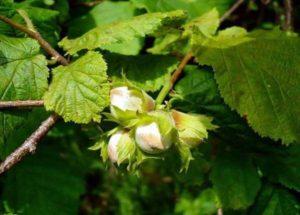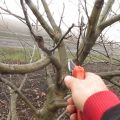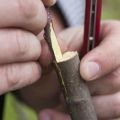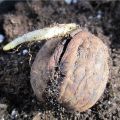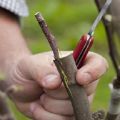How to plant walnuts in summer and spring at home
One of the ways to reproduce fruit crops is grafting. It is carried out in order to obtain a tree with high characteristics. These include resistance to low temperatures, strong immunity. After grafting a walnut in the summer, you can get such a culture that will be famous for rich harvests. But this procedure is rather complicated and requires certain skills.
Terms of vaccination
The most successful period for grafting a heat-loving culture is summer. In mid-July, they are preparing for the procedure using two-year-old seedlings. They are used for budding the walnut. Depending on where the walnut culture is propagated, the operation is planned from May to August.
The scion does not take root well if the procedure is left for the fall. Spring vaccination is also not always successful. At the end of winter, grafting can be carried out using cuttings as material. They are harvested in advance.
Budding methods
Every gardener vaccinates in his own proven ways. There are simple options for the operation and complex ones. For beginners, the budding method is suitable, which does not require special skills.
In one case, the peephole is removed along with the half-tube of the scion. Make 2 transverse cuts in the selected area with a special knife, without affecting the wood of the cutting. Then connect the parts by cutting longitudinally. The half-tube is removed together with the kidney. The kidney should be midway between the incisions. The surface of the scion is made even, carefully cutting off the tubercles and smoothing out the roughness.
The summer method of budding takes place with the help of an unformed vegetative bud. It is removed from those shoots whose bark is still grassy. At the beginning of summer, the nut graft is just in the stage of active growth. The grafting will be successful, as the callus quickly forms and grows at the junction of the scion and rootstock.
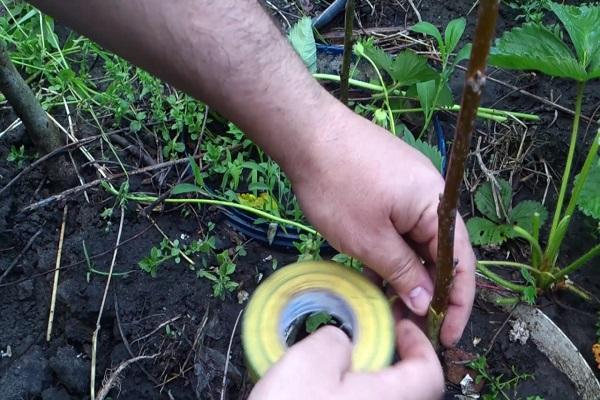
After 2-3 weeks, the gap between the flap and the bark at the graft site will be completely tightened.
The preparation of herbaceous scutes with a peephole for grafting is easy, since they are easy to break off at the level of the bark. In this case, the term of the procedure is shifted to May-June.
Grafting knife
An important condition for a successful vaccination operation is an instrument with which a kidney is cut out with a shield.

The knife can be purchased or ordered from special workshops. It has 2 blades. By placing them parallel and rigidly fastened, they get the ideal tool for grafting. The distance between the blades is 3 centimeters.
Self-made knives from surgical scalpels or high-quality sheet steel are also encouraged.The blades are mounted on wooden blocks 10 centimeters long and 1 wide. The main requirement for an instrument is its sharpness.
An ordinary budding knife will be an assistant in the procedure.

Elections and stock preparation
The tree for the stock is chosen from walnut varieties:
- age at 3 years;
- with a stem diameter of 1.5 centimeters;
- frost-resistant;
- with a strong immune system.
The main thing for the scion and rootstock should be closeness in their main characteristics. You can graft a bud on such varieties of crops that have high yields, such as Five-Year Plan, Dawn of the East. Self-grown seedlings of rock-type walnut are used. They practice grafting a walnut onto a Manchurian nut, which is more resistant to weather disasters.
It is necessary to clear part of the rootstock stem before inoculation. Along the trunk of at least 10-15 centimeters from the ground, 2 cuts are made with a knife, but the half-pipe is not removed so that the inoculation site does not oxidize.

It is interesting that walnuts can be grafted onto other crops. For this, stone fruit plants are used - cherries, plums. Lilac is suitable from flowering shrubs.
How to plant a walnut
Only when the kidney with the shield is prepared, then the proportionate part must be cut out on the rootstock. Experienced gardeners first prepare a cut in a half ring on the trunk of the seedling, and only then on the cut of a walnut. Then it is easier to connect the parts by shortening the extra strip of the scion. Eyes taken from the middle part of the cutting take root better, a little worse - at the base or at the top.
Having connected the bud with the shield and a half-ring on the rootstock, tied with a PVC tape. Begin to apply the twine from a cross section. Be sure to monitor the tightness of the tape over the wound. Better to apply layers of strapping in a spiral. Strapping is carried out from the bottom up and back. A lot of film is consumed, up to 50 centimeters, in order to tightly close the wound on the trunk.
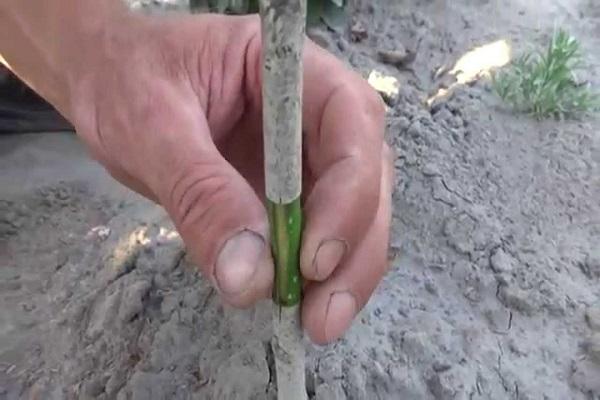
If the operation went clean, quickly, then the survival rate of the kidney will be high, oxidative processes in the tissues will not have time to start.
To prepare for budding on the same day, it is necessary to cut off a part of the rootstock crown so that the tree directs its forces on the accretion of the seedling cadmium and the bud shield.
Features of winter vaccination
The winter vaccination method is different from the summer one. It is carried out in a room where the stock is introduced 2 weeks before the procedure. The seedling and the stalk are prepared for the operation by cutting off the ends obliquely applied to each other. Do not forget about the tongue, which is left 1.5 centimeters in size. In this case, pay attention to the kidney, it should be on the scion on the opposite side of the cut. The parts of the scion and rootstock are connected so that the cadmium layers of the tongues coincide. The vaccination site is tied with twine or elastic tape, coated with garden pitch.
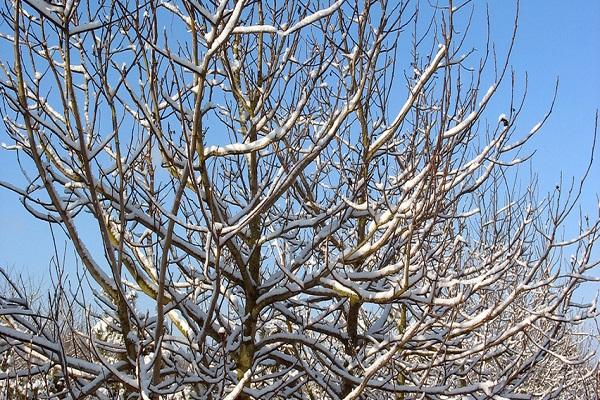
It is impossible to use a curved stalk with slight thickenings for the operation.
This home method is used to plant a grafted seedling in the garden in the spring. Until then, he will be in a dark and cool place.
You can grow walnut seedlings for the winter procedure with seeds. After 3 years, the stock will be ready in order to plant the desired variety of nut culture.
Spring is suitable for grafting, but in this case, the cuttings are harvested in the fall, they are kept in the basement. But vaccination rarely succeeds at this time of the year due to the fact that sap flow in the nut crop begins early. And it is necessary to graft before the tree begins to revive after winter.
